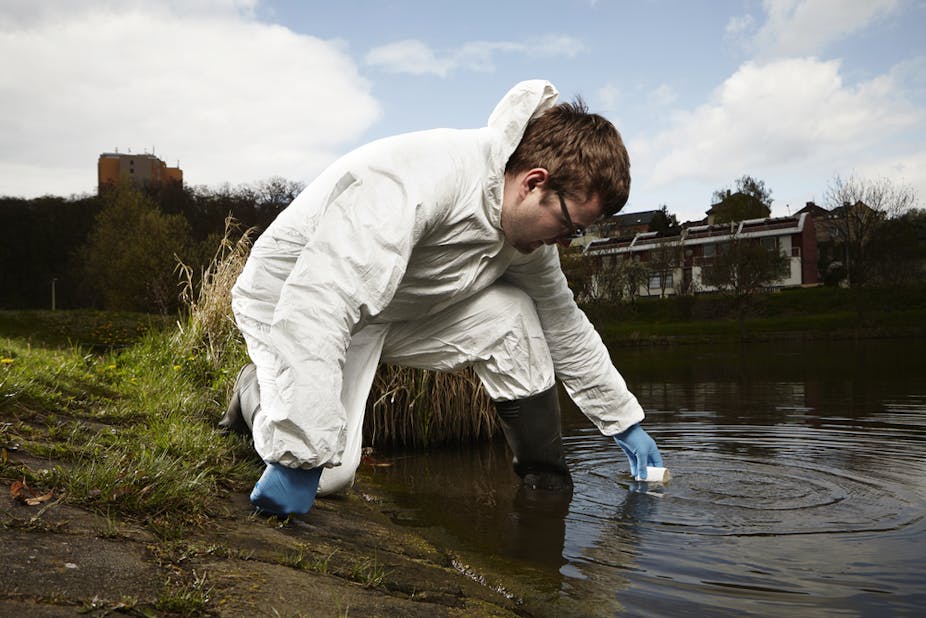Sampling – the collection and analysis of a representative mass like water, ore or soil – has evolved enormously since French chemist Pierre Gy penned his work on the subject in the early 1950s.
Today sampling is applied in all sorts of fields: pharmaceuticals, mining, agriculture, engineering and numerous other branches of the natural and applied sciences. A representative mass from what’s known as the lot – the larger mass – is collected and assessed. This allows us to understand what the lot’s components and properties are, and is a tool for interpreting it. In mining, for example, scientists sample a body of ore to see how big the lot is. Then they can decide how deeply it can or should be mined.
At least one field is lagging behind when it comes to using the application of sampling as a science. This is the discipline of hydrogeology, the branch of geology that studies groundwater and water that flows below ground. Groundwater, which is my research focus, is about 150 years old as a science and is still evolving.
Sampling has helped hydrogeologists to understand multiple aspects of their science. But recently it’s become clear that some water researchers are ignoring the evidence offered by sampling if it doesn’t fit their preconceived notions. This practice must be nipped in the bud: honest, open, truthful science should always be the aim.
The science of sampling
A good example of sampling bias is when a scientist expects certain results from a particular area – then omits results that seem anomalous or don’t fit his “professional opinion”. He expects a certain result, doesn’t get it, and simply ignores what the sampling evidence says. He doesn’t even further analyse the anomalies or try to explain them. This can be hugely dangerous, as the story of Flint, Michigan’s toxic water proves. There, employees from the Department of Environmental Quality ignored samples that showed how deadly the water was.
One of the gaps in the process comes once samples have been collected. Scientists are only involved in the first part of the process. They draw water from a river using proper equipment; the sample is then carefully preserved and transported to a laboratory in such a way that it retains its integrity.
Then they step back.
Samples are tested behind closed lab doors, usually by an analytical chemist. Hydrologists rarely get involved in the testing process. They just receive the results. And this is when the problems can begin: a scientist faced with anomalous results must decide whether to omit these or report them when writing up their findings.
This is clearly an ethical issue. One school of thought suggests that anomalous samples – those that don’t “meet the grade” should just be ignored. This pressure is driven by journals, many of which prefer to publish data that fits existing models than any which throws up anomalies. It’s a little like people only wanting to see photographs of pretty children rather than ugly babies; nobody wants their set ideas about something challenged.
There’s room for a lot of creativity and innovation to solve the problems I’ve described here.
Science must be honest and open
For starters, I believe that sampling as a science needs to be integrated into the field of groundwater. This will mean it can be taught better and standards developed so that hydrogeologists’ sampling techniques and outputs improve. Ultimately this sets up a space in which hydrogeologists’ biases – which they carry even as knowledgeable individuals in their fields – can be dislodged with proper quantitative analysis.
Crucially, scientists need to stop succumbing to peer review pressure; there’s no value in looking into data just to make it fit the norm. There’s also no reason to accept substandard results in the rush to publish. Science needs to be honest, open and able to supply the truth: even if that doesn’t involve the results we want.

